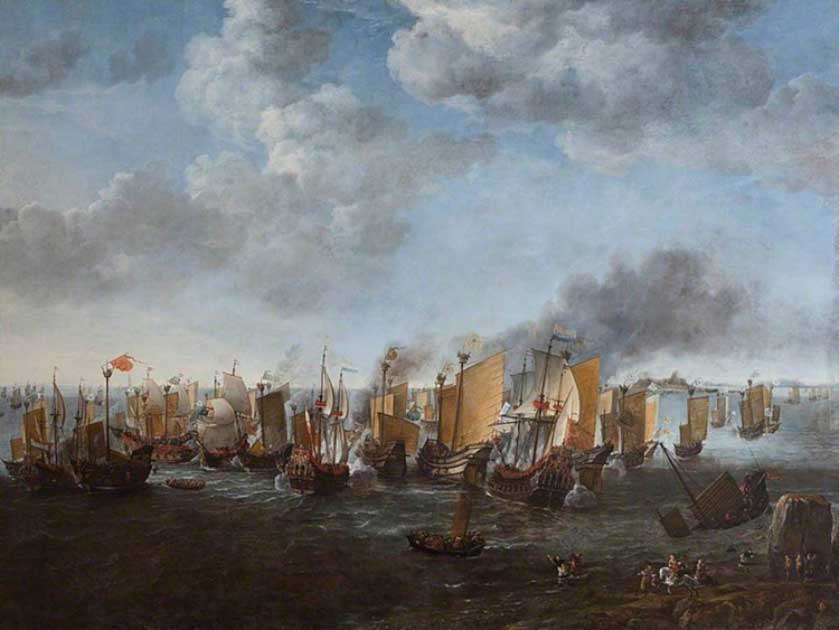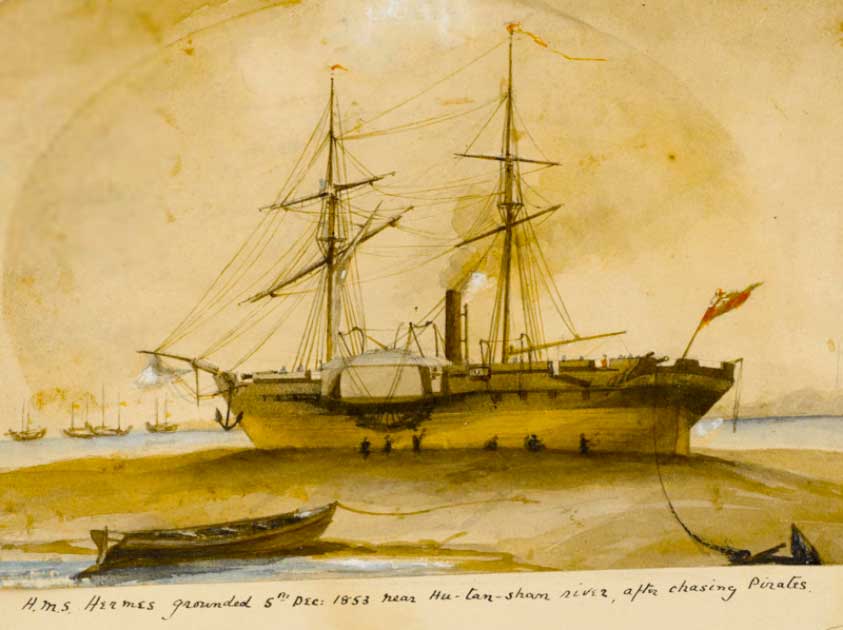The Ning Po was something of a treasure in and of itself. Built in 1753, this ship earned fame and fortune as a pirate vessel, ultimately being known for her incredibly long life. While most pirate ships were lost to the oceans, Ning Po would survive for centuries.
Before finally being destroyed in an accident (or during the filming of a movie) in 1938, the Ning Po was the oldest pirate ship to have been afloat. What has happened to the Ning Po now, and where can you find it? What was her story, and how did she come to sink off the western seaboard of the United States?
What was Ning Po?
Created in 1753, the Ning Po was a 3-masted junk or a small carrier for water transport. It was launched in the city of Fu Chau after its inception and was known as Kin Tai Foong.
The Ning Po was developed as a merchant trader ship with a unique design resembling that of a dragon. With a weight of 291 tons (264 tonnes) and a length of 138 feet (42 m), Ning Po was created to be the fastest vessel on Chinese waters. On top of it, it also qualified as one of the best-equipped vessels with a design that endured the test of time for almost two centuries.
Within no time, the merchant trader vessel transformed into a smuggler and slaver ship, drawing immense notoriety in those times. One of the prominent reasons for the fame of Ning Po refers to its participation in the rebellion against the Chinese Emperor in 1796.

Subsequently, the junk was also involved in criminal activities for the next 159 years in the Yellow Seas. Some of the notable criminal activities in which the Ning Po had participated include piracy, smuggling, mutiny and slave trading. However, it deserves attention for the durability it offered for a ship built in the 18th century.
Unsinkable
The fame of Ning Po depends on how effectively it stood the test of time as the oldest pirate vessel afloat before it sunk in 1938. Before arriving at the San Diego harbor in the 20s and 30s, Ning Po had garnered an infamous reputation. However, most modern observers point out how the pirate ship endured the damage of many battles and pirate ventures.
- The Other Titanic? SS Waratah, the Lost Ship Of South Africa
- Can You Find the Treasure? The Unsolved Code of the Pirate Levasseur
You can find a convincing answer to such doubts in the design and construction of the junk. First of all, the vessel was created with an unconventional design when compared to western vessels. For example, the Ning Po was developed with the objective of resembling a dragon.
The open bow of the vessel had the sides joined at the waterline, albeit with a wide separation at deck level. The bow looked like a mouth, while the disks on both bows offered the appearance of eyes. On top of it, the three-mast design made the sails and masts look like the fins of a dragon.
The extended high stern offered the appearance of the tail of the dragon, thereby completing a formidable look in the vessel. In addition, the Ning Po also featured artwork of two green sea serpents on the sides, closer to the stern. All this decoration was painted in bright colors, ensuring the Ning Po looked unique.
Did the design help in ensuring the durability of the vessel? This is down to the quality of the materials used in the construction of the ship. First of all, Ning Po had the advantage of oriental woods, which were not available in the west.
The ship used teak planks for the deck and ironwood for planking due to the density and strength of ironwood. Apparently, the ship also used ironwood in the ship’s anchor.
On top of it, the resilience of ironwood towards wood-eating worms also helped in keeping the vessel afloat for almost 160 years. The builders used caulking created from cocoa fiber, fishing nets and tallows for sealing the hull planks. The planks had to be laced with camphor wood ribs at each two and a half feet, and foot-long iron spikes helped in attacking the plans to ribs.
- MV Joyita: The Ghost Ship that Couldn’t Sink
- The Huge Fleet of Zheng He: An Armada to Conquer the World?
Another notable feature in the construction of Ning Po refers to the eight watertight bulkheads, which could be accessed only from the deck. Furthermore, the ship used bamboo cable, which was lightweight and strong. It also features two mounted swivel guns, which were used on various occasions until 1911.
What Happened to Her?
The unique design and construction of the Ning Po offer proof of its endurance in the face of changing tides of time. At the same time, people also wonder about what happened to the fastest, strongest and most well-equipped vessel on Chinese waters.
The rebellion against the Chinese Emperor in 1796 marked the beginning of an eventful course for Ning Po. It was seized for piracy and smuggling in 1806 and continued on similar pursuits until 1834.
In 1841, the vessel was seized by the Chinese government and was subsequently used for imprisoning smugglers and pirates. Apparently, the government had ordered the execution of almost 158 prisoners by beheading them on the deck.

The “chopping block” put on display on the deck of Ning Po and the starvation cage alongside beheading swords and other weapons show that the frightening tales about the vessels might be true.
After being wrecked in a typhoon in 1861, pirates repaired her and used the vessel to attack tourists in Hong Kong. Ultimately, it was captured by rebels in 1901 in the battle of Hankow and was sold for $50,000 to Americans.
Then, it was moved to San Pedro, followed by towing to Venice Beach. Finally, it was moved to San Diego harbor in 1915 after being transported to San Pedro. Somewhere around 1917, the Ning Po was transferred to Catalina Harbor, where it rotted on the beach sand. The oldest vessel afloat had to give in to an accidental fire in 1938 and now lies in ruins.
Top Image: The Ning Po is perhaps the most legendary pirate ship in Chinese history, a three masted junk shaped to look like a dragon. Source: William Smyth / Public Domain.
By Bipin Dimri